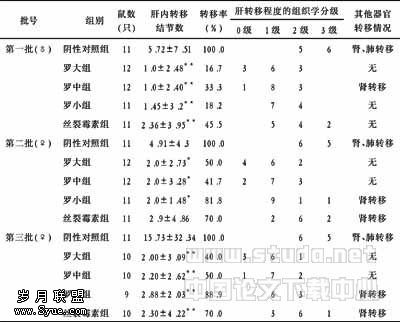临床评估五种膜式氧合器在不同温度下的跨膜压差
作者:刘瑞芳,邢家林,缪娜,柳薇,吉冰洋
【摘要】 目的 评估五种中空纤维膜式氧合器( HFMO) 在体外循环(CPB)中不同温度下的跨膜压差 (TMPD)。方法 40例择期CPB下行心脏直视手术患者依据使用HFMO的不同随机分为五组(每组8例):A组(Affinty),C组(Cobe),J组 (Jostra),P组(Polystan)和T组(Terumo)。在CPB全流量后(T1)、 最低温度时(T2)、复温后 (T3)监测灌注流量、鼻咽温度、红细胞比积、平均动脉压,并在HFMO的入口和出口处监测压力的变化。结果 各组术前的临床参数没有显著性差异(P>0.05)。TMPD在不同的时点J组为最小,其他依次分别为A组0.05)。A组、P组和T组在低温过程中的TMPD分别高于T1和T3,但没有显著性差异(P>0.05)。结论 J组和A组的TMPD较低可能更有利于减少对血细胞的破坏,更适合应用于CPB时间较长的心脏手术。
【关键词】 膜式氧合器;跨膜压差;体外循环;温度
Abstract: OBJECTIVE To evaluate five type commercial available oxygenators of the trans-membrane pressure drop (TMPD) during normothermic and hypothermic cardiopulmonary bypass (CPB). METHODS Forty patients scheduled for cardiac surgery participated this study and were divided into five groups (n=8,in per-group) according to type of oxygenators used during CPB: group J (Joatra Quardox), group A (Affinity NT), group P (Polystan Safe Maxi), group T (Terumo Capiox SX) and group C (COBE APEX-TM). Parameters were collected during CPB including mean arterial pressure, pump flow, temperature, hematocrit and TMPD at pre- and post-oxygenator during normothermic(T1), hypothermic,28 ℃ (T2) and after rewarming (T3). RESULTS There was no significant difference among five groups in pre-operative clinical parameters (P>0.05). TMPDs of group J were the lowest in different time-points, followed by the other group were group A < group P < group T < group C. TMPD of group J and A compared to the other three groups were lower (P<0.01) respectively and J was significant lower than group A at T2 (P<0.01). Except TMPDs of group P were significantly lower than group C (P<0.01) at T1, there were no statistical significance (P> 0.05) in various time-points. Although TMPDs in group A, P and T during T2 were higher than T1 and T3, but there were no statistical significance (P>0.05) in various time-points.CONCLUSION The TMPD of HFMOs in group J and A produced significantly lower and during normothermic and hypothermic CPB, thus blood trauma with these two HFMOs during CPB may be significantly lower compared to the other three.
Key words: Membrane oxygenato; Pressure drop;Cardiopulmonary bypass; Hyperthermia
随着生物医学工程技术的进步,中空纤维膜式氧合器(hollow-fiber membrane oxygenators,HFMO)的走血方式从纤维内走血变为纤维外走血,不仅减小了血流通过HFMO的阻力,同时减轻了由于高压差带来的高剪切应力,从而减少了对血液细胞的破坏。本研究的目的是临床观察五种不同进口HFMO在体外循环(cardiopulmonarybypass,CPB)中不同温度下的跨膜压差(Trans-membrane pressure drop,TMPD)。
1 资料和方法
1.1 病例选择和分组 40例择期CPB下行心脏直视手术患者依据使用HFMO的不同,随机分为5组(每组8例):A组(Affinity NT, Medtronic)、C组(APEX-TM Sorin-COBE)、J组 (Quadrox Maquet-Jostra)、P组(Safe Maxi, Polystan A/S, Vaerlose)、T组(Capiox SX, Terumo Corp)。患者的一般情况见表1。5种HFMO功能参数见表2。
1.2 麻醉和CPB 方法 患者均采用气管内插管静吸复合麻醉下行开心手术。体内肝素3 mg/kg,应用ACT仪(Hemochron Jr)监测围体外循环期的ACT,待ACT>400秒,动静脉插管建立CPB。使用Stockert-II或者Jostra-20 型人工心肺机, CPB 预充1 000 ml勃脉力、500 ml代血浆、10g白蛋白、1 mg/kg肝素; CPB 中的流量维持在2. 4~2. 8 L/ (min·m2 ),鼻咽温维持在30℃左右。在阻断心肌血流后采用高钾冷血停搏液灌注心肌,每隔30 min灌注一次低钾冷血停搏液。表1 患者术前和术中的临床参数表2 五种HFMO的功能参数
1.3 观察指标和测定方法 分别记录五种HFMO的具体参数,见表2。分三个不同的温度点T1(CPB并行全流量后)、 T2(最低鼻咽温时)、 T3(复温后),记录灌注流量、最低鼻咽温度、红细胞比积(Hct)、平均动脉压(MAP),并在HFMO的入口和出口处分别通过压力传感器监测不同时点的压力。
1.4 统计学方法 采用SPSS软件11.5统计软件进行统计,首先应用方差分析,如果组间存在显著性差异,再应用Student t-test比较任意两组间的三个不同时点的TMPD。各组内的三个不同时点TMPD的比较应用配对t检验,计量资料以均数±标准差( ±s )表示,以P<0.05为差异有显著性意义,P<0.01为差异有极显著意义。
2 结 果
2.1 各组间的患者一般情况和术中的主动脉阻断时间和CPB时间没有显著性差异(P>0.05)。见表1。
2.2 各组在不同温度下的流量、温度、Hct以及MAP没有显著性差异(P>0.05)。见表3。
2.3 各组间不同温度点的TMPD见表4。TMPD在不同的时点J组均为最小,其他组依次分别为A组0.05)。A组、P组和T组在低温过程中的TMPD分别高于T1和T3,但没有显著性差异(P>0.05)。见图1。
图1 五种HFMO在不同温度下的TMPD
3 讨 论
减少预充量是目前膜肺设计的主要方向,尽管新一代的HFMO的设计使预充量明显减少,但是并没有充分提高其相关的参数性能。而TMPD作为一个非常重要的设计参数,仍需要在未来的HFMO的设计中加以改进和提高。因为较大的TMPD不仅会增加红细胞破坏的几率和程度,因此而产生的高剪切应力会导致大量的白细胞激活以致蛋白酶和补体的大量激活和释放,增加CPB过程中炎性反应对机体的损伤[1]。
从厂家提供的数据来看,尽管Terumo公司的CAPIOX SX 18的预充量较其他组要小,且其操作平面较低,比较适合亚洲人的体重,但从临床观察结果看其TMPD较高。Terumo公司CAPIOX RX系列应用X-Coating的HFMO已经应用于婴幼儿临床,并且报道其在TMPD的方面性能较为出色[2,3],但表3 不同温度下各组临床参数表4 不同温度下各组TMPD是其成人CAPIOX RX系列的HFMO还没有通过我国相关机构的检测。从本研究的结果可以看出,J组和A组在各个时点的TMPD均较其他组明显降低,而由此产生的血液破坏和炎性反应可能会小于其他组,建议对于长时间的CPB以及应用搏动灌注模式[4,5],选择上述两个HFMO可能更为有益于减少血液破坏和炎性反应。
本研究同时观察到在低温期A组、C组、P组和T组的TMPD分别高于常温期和复温后,只有J组表现为略微下降,从厂家提供的资料表明,唯有J组的变温装置的材料与其他四组不同,是聚亚胺酯而其他四种均为不锈钢;我们推测有可能是由于聚亚胺酯的导热性能较不锈钢材料更为均匀,使血液温度在降温过程中不会形成与变温水箱内水流的巨大温差。这样就会避免由于迅速的温度下降而导致纤维蛋白原冷沉淀和凝集从而导致TMPD增加,而在复温后这种沉淀和凝集逐渐恢复。因此,在CPB过程中应用变温材料为不锈钢的HFMO时均匀缓慢的降温是非常重要的。并且有文献报道预充一定量的白蛋白有利于防止降温过程中纤维蛋白原冷沉淀和凝集的发生[6]。
综上所述,J组和A组的TMPD在CPB的各个时点明显小于其他各组,所以从TMPD的角度评价以上5种HFMO的性能:J组和A组的HFMO可能更适合应用于CPB时间较长的心脏手术。HFMO在低温状态下导致TMPD的升高可能是由于快速降温导致纤维蛋白原冷沉淀和凝集作用,不同变温材料对TMPD的影响还有待进一步的研究和探讨。
【文献】
[1] Gu YJ, Boonstra PW, Graaff R, et al. Pressure drop, shear stress, and activation of leukocytes during cardiopulmonary bypass: a comparison between hollow fiber and flat sheet membrane oxygenators[J]. Artif Organs,2000, 24 (1): 43-48.
[2] Undar A, Owens WR, McGarry MC, et al. Comparison of hollow-fiber membrane oxygenators in terms of pressure drop of the membranes during normothermic and hypothermic cardiopulmonary bypass in neonates[J]. Perfusion 2005, 20 (3): 135-138.
[3] Dubois J, Jamaer L, Mees U, et al. Ex vivo evaluation of a new neonatal/infant oxygenator: comparison of the Terumo CAPIOX Baby RX with Dideco Lilliput 1 and Polystan Safe Micro in the piglet model[J]. Perfusion,2004; 19(5): 315-321.
[4] Undar A, Ji B, Lukic B,et al. Comparison of hollow-fiber membrane oxygenators with different perfusion modes during normothermic and hypothermic CPB in a simulated neonatal model[J]. Perfusion,2006,21(6): 381-390.
[5] Ji B, Undar A. An evaluation of the benefits of pulsatile versus nonpulsatile perfusion during cardiopulmonary bypass procedures in pediatric and adult cardiac patients[J]. ASAIO J, 2006, 52 (4): 357-361.
[6] Segers PA, Heida JF, de Vries I, et al. Clinical evaluation of nine hollow-fibre membrane oxygenators[J]. Perfusion,2001, 16(2): 95-106.











